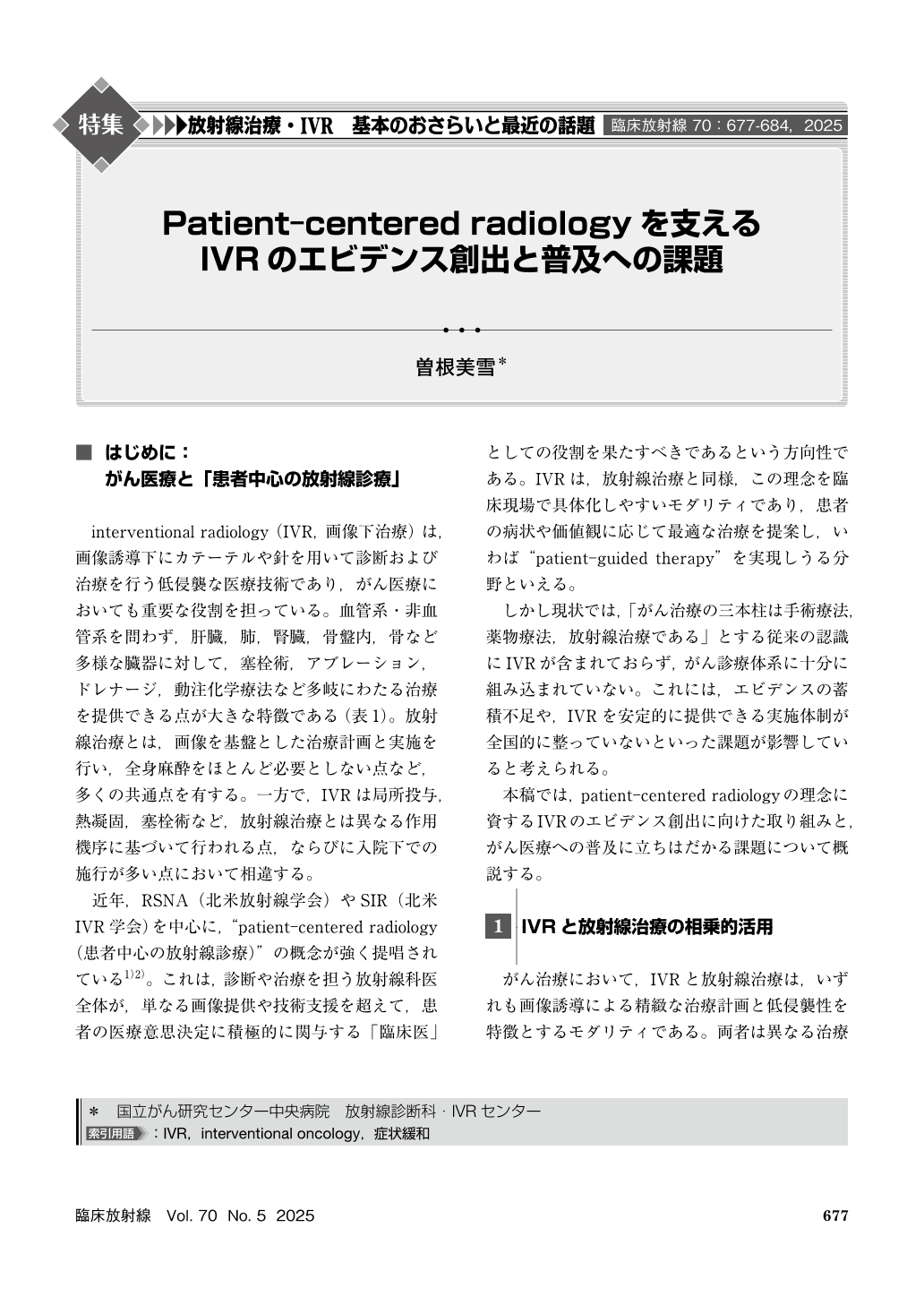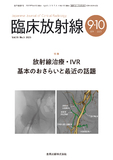Japanese
English
- 有料閲覧
- Abstract 文献概要
- 1ページ目 Look Inside
- 参考文献 Reference
interventional radiology(IVR,画像下治療)は,画像誘導下にカテーテルや針を用いて診断および治療を行う低侵襲な医療技術であり,がん医療においても重要な役割を担っている。血管系・非血管系を問わず,肝臓,肺,腎臓,骨盤内,骨など多様な臓器に対して,塞栓術,アブレーション,ドレナージ,動注化学療法など多岐にわたる治療を提供できる点が大きな特徴である(表1)。放射線治療とは,画像を基盤とした治療計画と実施を行い,全身麻酔をほとんど必要としない点など,多くの共通点を有する。一方で,IVRは局所投与,熱凝固,塞栓術など,放射線治療とは異なる作用機序に基づいて行われる点,ならびに入院下での施行が多い点において相違する。
In recent years, the concept of “patient-centered radiology” has been strongly advocated, particularly in North America. This is a movement toward the idea that all radiologists responsible for diagnosis and treatment should go beyond simply providing images and technical support and fulfill the role of “clinicians” who are actively involved in patients’ medical decision-making. Like radiation therapy, interventional radiology(IVR) is a modality that can easily put this concept into practice in clinical practice, proposing optimal treatment based on the patient’s condition and values, and can be said to be a field that can realize what is known as “patient-guided therapy.” However, at present, it is not fully incorporated into the cancer treatment system. This is thought to be due to issues such as a deficiency of accumulated evidence and the lack of a nationwide implementation system that can provide IVR reliably. This article outlines efforts to generate evidence for IVR that contributes to the concept of patient-centered radiology, as well as the challenges facing its widespread adoption.

Copyright © 2025, KANEHARA SHUPPAN Co.LTD. All rights reserved.


